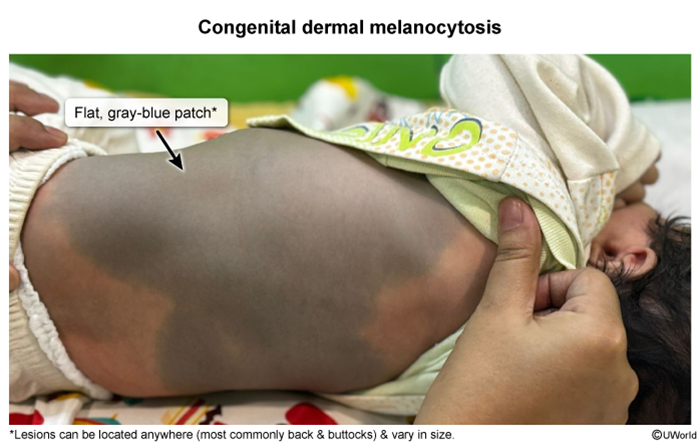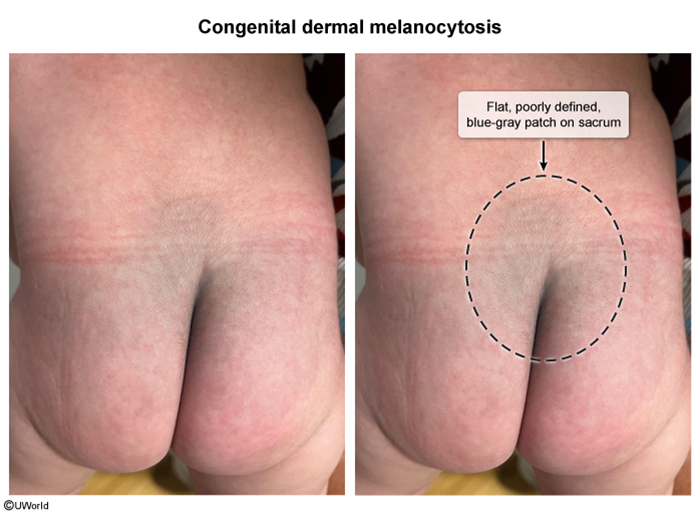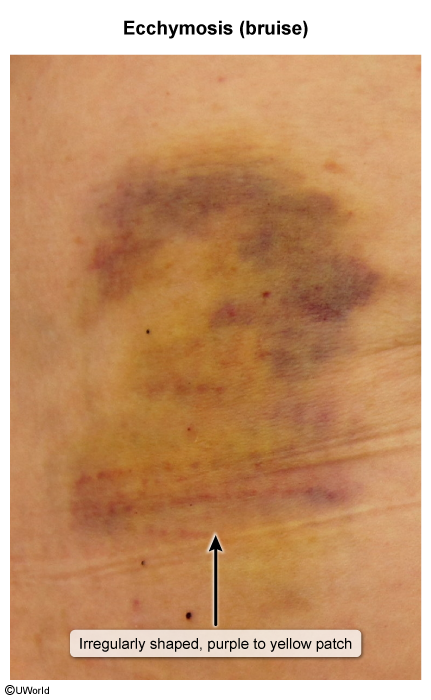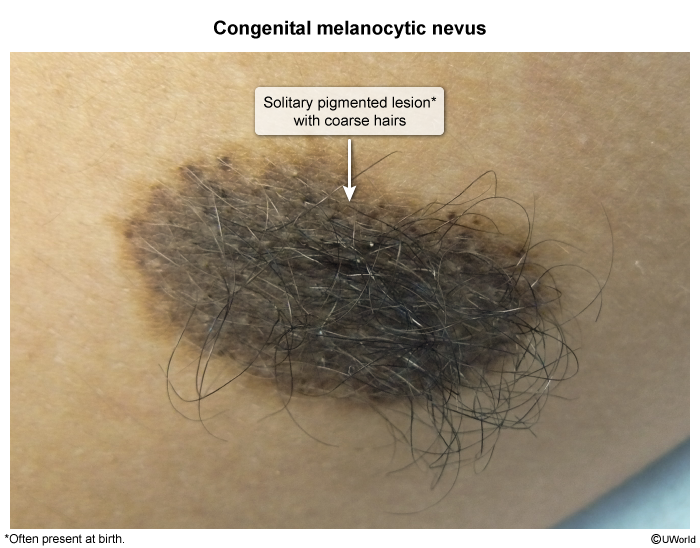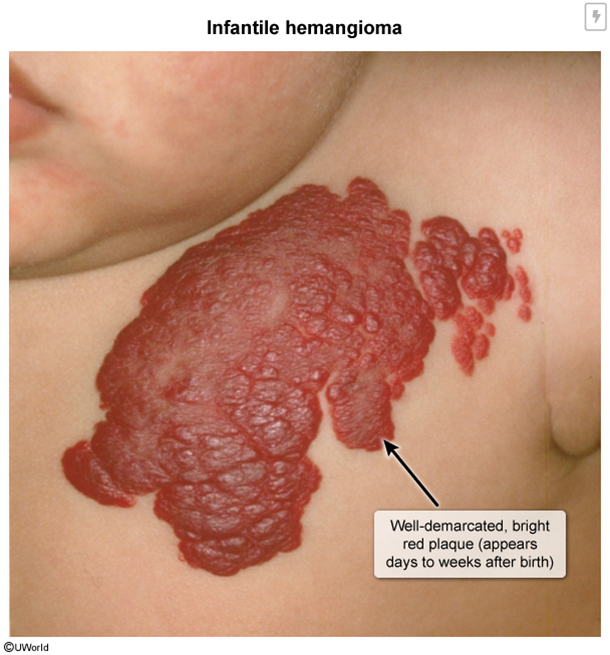Congenital Dermal Melanocytosis
Article Sections
Overview
Congenital dermal melanocytosis (CDM) is a benign pigmented condition that manifests at birth as flat, blue-gray patches classically located on the sacrum or buttocks. No treatment is required because the lesions fade in early childhood. However, differentiation of CDM from bruising (ie, nonaccidental trauma) is required.
Pathogenesis
CDM is a benign, pigmented condition caused by the delayed disappearance of melanocytes within the dermis. In utero, melanocytes normally migrate from the neural crest to the epidermis through the dermis. CDM is likely related to arrested melanocyte migration within the dermis, resulting in melanin production in this deeper layer of skin and the characteristic blue-gray color. This likely explains the higher incidence in patients with darker skin tones; CDM was formerly referred to as "mongolian spots."
Continue Learning with UWorld
Get the full Congenital Dermal Melanocytosis article plus rich visuals, real-world cases, and in-depth insights from medical experts, all available through the UWorld Medical Library.
Figures

Images
